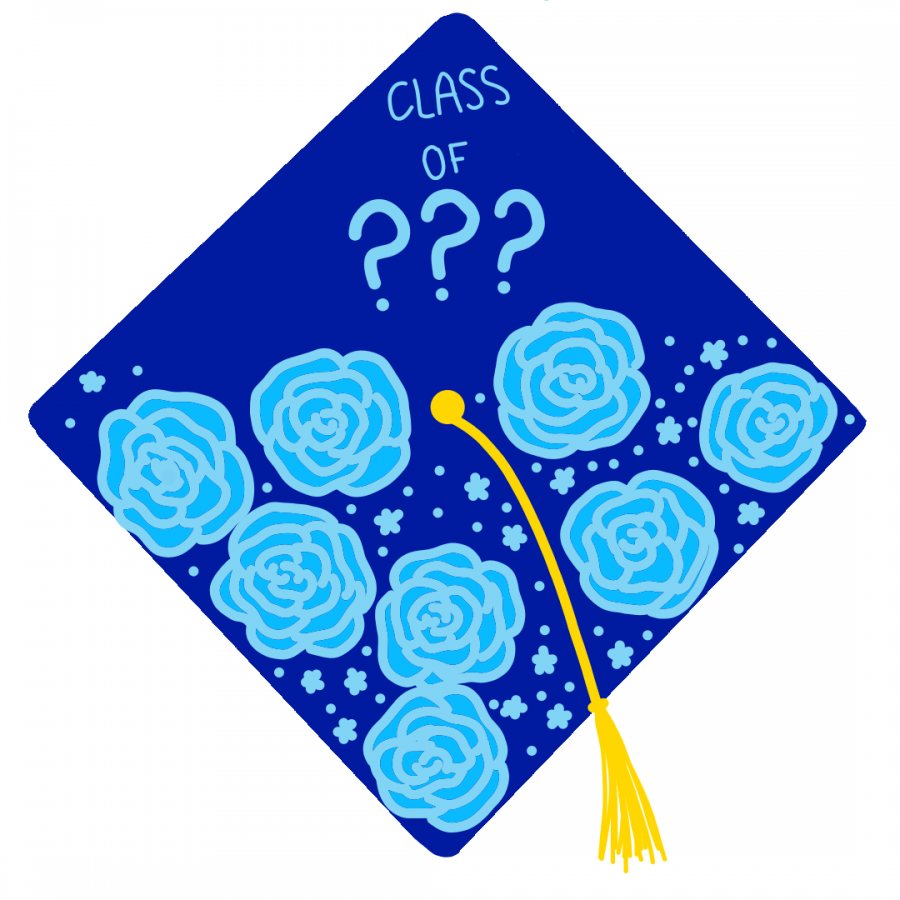Opinion | Our education system is failing us
September 29, 2020
Unemployment in April was the worst since the Great Depression, and it left American college graduates scrambling for whatever jobs they could get their hands on.
Despite this year’s COVID-19 unemployment trends, college graduates settling for any job is not new. Graduates today often do not work in a job requiring a degree, or do not work in a job that is in their field. This is strange, considering the obscene amount of time and money that students spend getting their degrees. The bulk of the blame is being put on the students themselves, with millennials and Gen Z often being dubbed as lazy, when in actuality, the issue is a far deeper problem with America’s education system and how it does not work to properly educate students.
The root of the problem rests in our high schools. The lack of hands-on learning, effective teaching methods based on psychological research and a narrow-minded education is setting students up for failure in college and in the job market. When a student pays hundreds of thousands of dollars to spend four to 10 years in full-time classes, college really can’t be seen as anything else but an investment into your career. But when high school students enter college with little to no idea about what they want to do with their lives, they are wasting both time and money on an education that may not be aiding them in their future career.
An estimated 20-50% of students enter college with an undecided major, and 75% of students change their major at least once before graduation. Students often take two years to decide on a major. Changing a major after two years is difficult to do without paying tuition for a few more semesters. If college preparation methods in high school changed, it would help students to decide on a major before even entering college, saving students time and money. Many of these students pick a major that may not be best suited to them out of pressure not to pay for a few more years of college, leading to 41% of college graduates working in jobs that do not require a degree, and only 27% of college graduates working in a field related to their major.
Many parents seek a solution to this problem — STEM and arts schools. Sending their child to a specialized middle or high school increases focus in a smaller group of subjects to promote college readiness. In the case of specialized high schools, less than 50% of STEM school students actually intend on going into the field. This shows that neither traditional nor specialty high schools have higher chances of pushing students toward certain career choices.
We need high schools to change their curriculums to help prepare students for college and make well-informed decisions about their future. First and foremost, high school curriculums and offered classes need to be flexible and diverse, ranging far beyond and within the core subjects of math, science, history and english. A well rounded- and content-rich education is a great way to allow for students to accomplish their soul searching and career discovery in high school, so that it doesn’t have to occur in a much more expensive college environment.
Vocational classes, also known as “shop classes,” have mostly disappeared from schools and desperately need to be reincorporated back into curriculums. These classes let students discover paths that may not lead to college, but may lead to trade school instead. “Life skills,” such as money management, resumé building and business management should also have a higher prevalence in high schools, not only because they teach problem-solving and critical thinking skills that are often underrepresented in typical core classes, but also because they expose students to new career possibilities and teach them skills they will need to get a job in the future.
Hands-on experiences like these are important in every subject. Students getting their heads outside of the classroom and into the workplace to see the real-life applications of what they are learning in school is not only a great way to increase learning and retention of knowledge, but also exposes students to possible careers, passions, interests and hobbies. Students should have the opportunities to see how a hospital works, to be able to see how cases play out in the courtroom, how groundbreaking scientific research takes place and how an artist creates works of art in their studio. Hands-on education will help students go less blindly into their college admissions or trade school processes with a much clearer picture of their major and careers in the future.
A switch to a hands-on learning environment must be accompanied by a change in teaching methods. Standardized tests dominate the teaching scene and the education of students today. Curricula are teaching to the test rather than teaching students to learn. There are many movements against this already, and COVID-19 has caused many colleges to drop the requirements for ACT and SAT scores, which is a step toward getting rid of them altogether. But eliminating these exams alone will not improve education or college readiness, as they were a poor indicator of college readiness to begin with.
Often, multiple teaching methods and styles are not included into curricula, and teachers are not given the resources to do so. Even popular college readiness classes, such as Advanced Placement classes, are taught with the priority of students passing the AP test at the end of the year. No one method fits all, but many are better than others for specific subjects and topics. Teaching methods as a whole need to change to be focused on building relationships between students and teachers, on student-centered learning and on increasing student autonomy. This will improve critical thinking and decision-making skills that are necessary when entering the workforce.
Adjusting the way high school curriculums teach students will improve student’s critical thinking skills and autonomy, and allow them to make educated and informed decisions about their future, whether that be college, trade school, entrepreneurship or otherwise. Hands-on experiences and a well-rounded education are necessary to ensure that college education doesn’t go to waste, and students can end up working in a field they love.
Dalia Maeroff writes primarily about issues of psychology, education, culture and environmentalism. Write to her at DAM291@pitt.edu.




